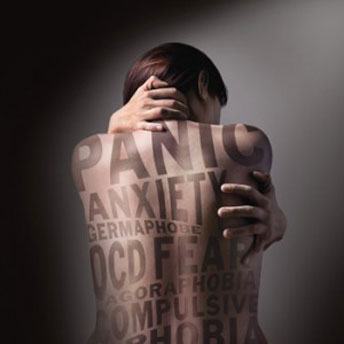 Anxiety: an unpleasant state of mental uneasiness, nervousness, apprehension, and concern about some event or situation. Anxiety: an unpleasant state of mental uneasiness, nervousness, apprehension, and concern about some event or situation.
Anxiety is a normal human emotion that everyone experiences from time to time. People may feel anxious when facing problems, challenges, changes, or difficult decisions. Anxiety disorders, however, are dysfunctional responses to anxiety-inducing situations.
“Anxiety disorder” refers to any of a number of specific disorders, including generalized anxiety disorder, phobia, panic disorder, obsessive-compulsive disorder, post-traumatic stress disorder, and social anxiety disorder. Anxiety disorders are defined by excessive worry, apprehension, and fear about future events or situations, either real or imagined. |
Specifically, symptoms may include:
Feelings of panic, fear, or uneasiness Anxiety in and of itself is not a bad thing. In fact, the hormonal response involved in anxiety evolved to help humans react to danger—it better prepares them to recognize threats and to act accordingly to ensure their safety. Such sensory information is processed by the amygdala, which communicates information about potential threats to the rest of the brain. Anxiety disorders develop as the result of the interaction of genetic (inherited) and environmental factors. In addition to biological factors, anxiety disorders can also be caused by various life stresses, such as financial worries or chronic physical illness. |
Categories: Articles
